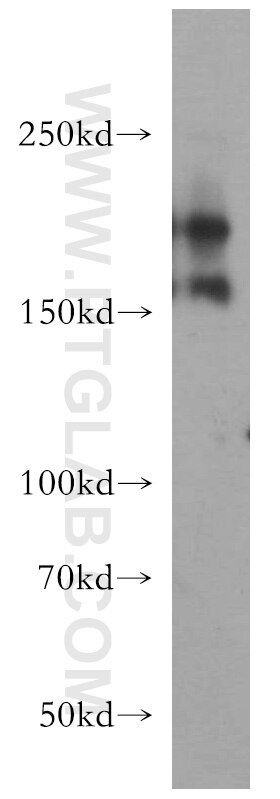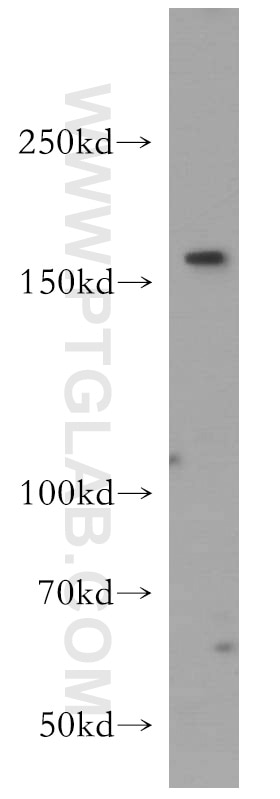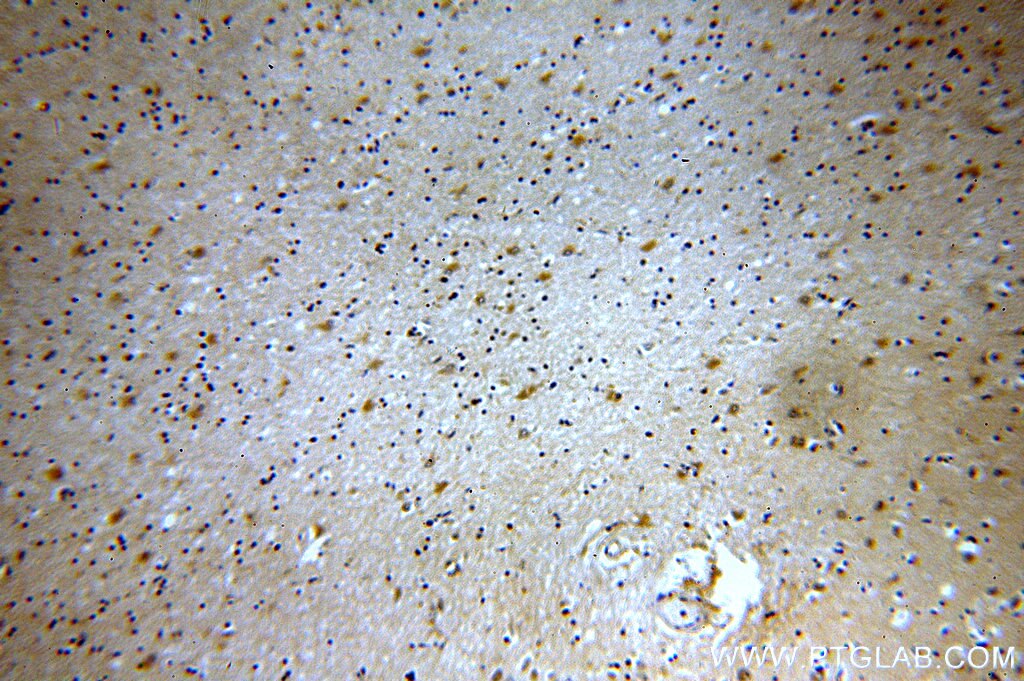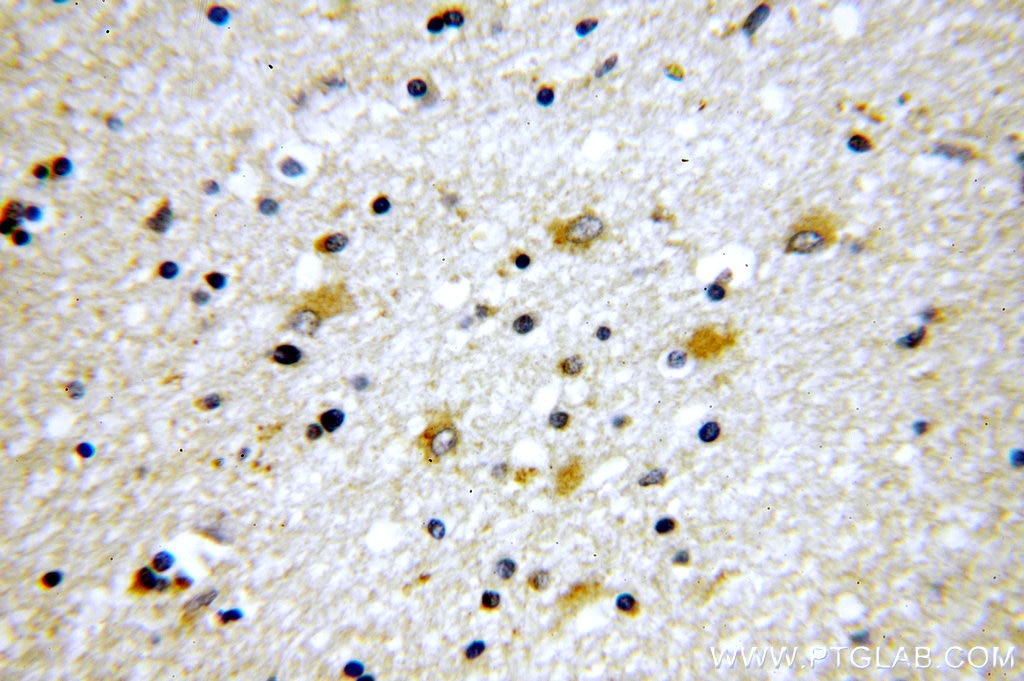Tested Applications
| Positive WB detected in | human brain tissue, SH-SY5Y cells |
| Positive IHC detected in | human brain tissue Note: suggested antigen retrieval with TE buffer pH 9.0; (*) Alternatively, antigen retrieval may be performed with citrate buffer pH 6.0 |
Recommended dilution
| Application | Dilution |
|---|---|
| Western Blot (WB) | WB : 1:500-1:2000 |
| Immunohistochemistry (IHC) | IHC : 1:20-1:200 |
| It is recommended that this reagent should be titrated in each testing system to obtain optimal results. | |
| Sample-dependent, Check data in validation data gallery. | |
Published Applications
| WB | See 1 publications below |
| IHC | See 1 publications below |
Product Information
19730-1-AP targets Tenascin-R in WB, IHC, ELISA applications and shows reactivity with human samples.
| Tested Reactivity | human |
| Cited Reactivity | human |
| Host / Isotype | Rabbit / IgG |
| Class | Polyclonal |
| Type | Antibody |
| Immunogen |
Peptide Predict reactive species |
| Full Name | tenascin R (restrictin, janusin) |
| Calculated Molecular Weight | 150 kDa |
| Observed Molecular Weight | 180 kDa, 160 kDa |
| GenBank Accession Number | NM_003285 |
| Gene Symbol | TNR |
| Gene ID (NCBI) | 7143 |
| RRID | AB_10665365 |
| Conjugate | Unconjugated |
| Form | Liquid |
| Purification Method | Antigen affinity purification |
| UNIPROT ID | Q92752 |
| Storage Buffer | PBS with 0.02% sodium azide and 50% glycerol, pH 7.3. |
| Storage Conditions | Store at -20°C. Stable for one year after shipment. Aliquoting is unnecessary for -20oC storage. 20ul sizes contain 0.1% BSA. |
Background Information
TNR, also named as Restrictin and Janusin, belongs to the tenascin family. Neural extracellular matrix (ECM) protein involved in interactions with different cells and matrix components. These interactions can influence cellular behavior by either evoking a stable adhesion and differentiation, or repulsion and inhibition of neurite growth. Binding to cell surface gangliosides, TNR inhibits RGD-dependent integrin-mediated cell adhesion and results in an inhibition of PTK2 (FAK) phosphorylation and cell detachment. Binding to membrane surface sulfatides, TNR results in a oligodendrocyte adhesion and differentiation. Interaction with CNTN1, TNR induces a repulsion of neurons and an inhibition of neurite outgrowth. Interacts with SCN2B, TNR may play a crucial role in clustering and regulation of activity of sodium channels at nodes of Ranvier. TNR-linked chondroitin sulfate glycosaminoglycans are involved in the interaction with FN1 and mediate inhibition of cell adhesion and neurite outgrowth. The highly regulated addition of sulfated carbohydrate structure may modulate the adhesive properties of TNR over the course of development and during synapse maintenance. The antibody is specific to TNR.
Protocols
| Product Specific Protocols | |
|---|---|
| IHC protocol for Tenascin-R antibody 19730-1-AP | Download protocol |
| WB protocol for Tenascin-R antibody 19730-1-AP | Download protocol |
| Standard Protocols | |
|---|---|
| Click here to view our Standard Protocols |










